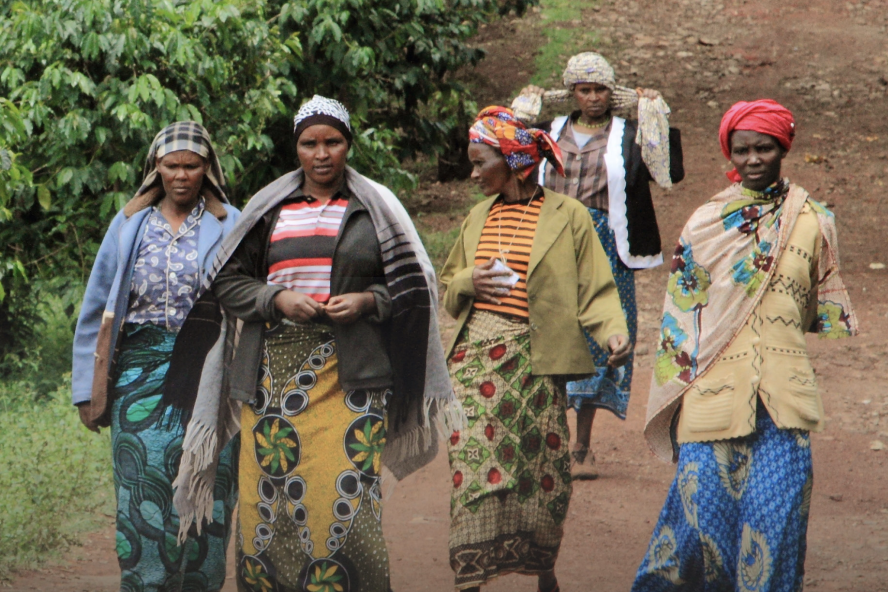Factsheet for young people: Locally Led Adaptation

Introduction
Locally led adaptation (LLA) is about ensuring that local people have individual and collective agency over the adaptation process.
Over 60 percent of the population are smallholder farmers and over 55 percent of the urban population live in informal settlements in Sub-Saharan African countries. Therefore, LLA holds the promise of unlocking variegated responses to highly localized risks in contexts marked by deficits in formal governance machinery.
This factsheet is part of a series that presents information from GCA’s flagship reports State and Trends in Adaptation in Africa 2021 and 2022. It aims to disseminate key adaptation information to young people and showcase youth-led adaptation action from across Africa.
This article is an abridged version of the original text, which can be downloaded from the right-hand column. Please access the original text for more detail, research purposes, full references, or to quote text.
Good practices: Adaptation solutions
The Climate Frontier Project – Bangladesh
The Climate Frontier Project is a storytelling project that collected 1,000 stories from climate vulnerable women in Bangladesh to learn about the effects of climate change on women and adaptation measures they take before and after natural disasters.
The project highlights the importance of empowering climate-vulnerable women and supporting their adaptation strategies. Key recommendations include that policymakers and development organizations invest in programs that support women’s livelihoods, promote climate-resilient infrastructure, and strengthen social networks in climate vulnerable communities. Find out more!
Mukuru, Kenya
Mukuru is one of Nairobi’s largest slums, housing some 100,000 families. While people have lived here since the 1980s, housing conditions are extremely poor with frequent incidents of flood, fires, and other hazards apart from poor sanitation, water, and access to other basic services. To remedy the situation, the Nairobi City County (NCC) officially declared Mukuru as a Special Planning Area (SPA), ceasing further development activity for two years until a Mukuru Integrated Development Plan is produced.
Central to the SPA has been the creation of consortiums where community groups work alongside local government, academic institutions, and international organizations to identify investment priorities in the areas of water, sanitation and energy; health services; education, youth and culture; environment and natural resources; housing, infrastructure and commerce; and community organization.
To shift away from a ”business as usual” way of working where “experts” exclusively assess risks, local organizations have employed community-centered methodologies to identify risks and develop action plans to address them. This has resulted in a model of climate-resilient slum redevelopment that is authentically locally led.
Learn more on page 2 of the factsheet!
Key Messages
- International funders should significantly scale up the volume of climate finance that they deliver through LLA mechanisms.
- International funders—in particular global climate funds—should create channels for providing finance directly to subnational governments and institutions.
- International funders should significantly increase finance to constituency-governed organizations that provide some of the most locally grounded adaptation solutions.
- Countries with devolved governance systems should establish subnational adaptation planning and investment processes so that climate action is downscaled to local governments.
- In countries without devolved government systems, governments should build the capacity of national climate finance institutions to deliver finance in line with the LLA Principles.
- Where governments deliver local level development programs with adaptation co-benefits, these should be aligned with the LLA Principles.
- Civil society organizations should expand the coverage of tried and tested LLA delivery mechanisms, while also deepening support so that they are longer-term and more predictable.
- Governments should explore the possibility of creating and/or capacitating subnational climate funds and institutions that can access adaptation finance.
- Large-scale NGOs that deliver finance through traditional international financing modalities should aim to mainstream the LLA Principles into programming in order to improve accountability for local constituents.
Explore the main barriers to achieving, and the principles for Locally Led Adaptation in the factsheet!
Suggested Citation:
Khanna, M. and Rothi, S.J. (2023). Factsheet for young people: Locally Led Adaptation. Available at: https://gca.org/reports/factsheet-for-young-people-locally-led-adaptation-lla/
(0) Comments
There is no content